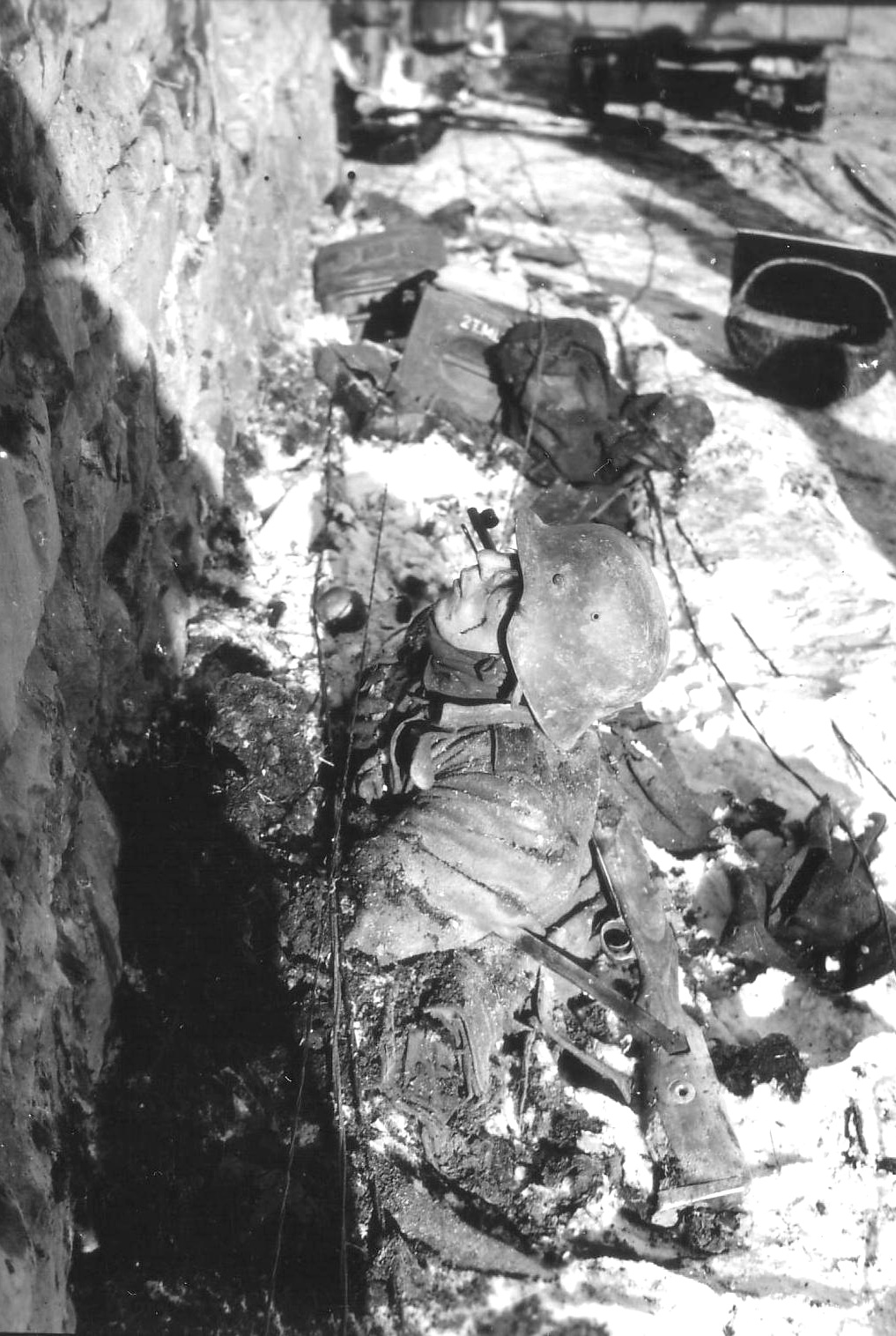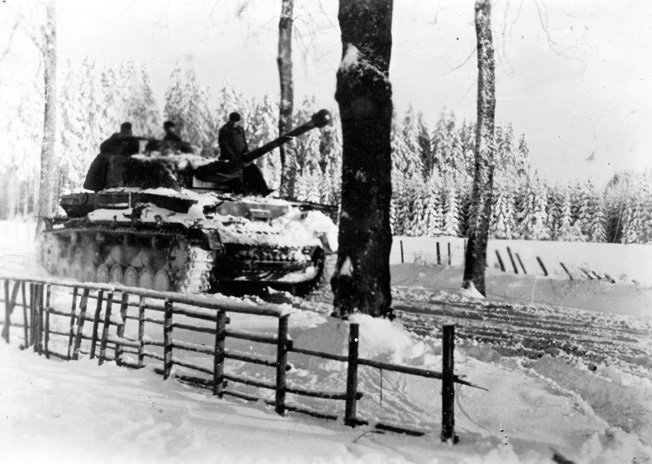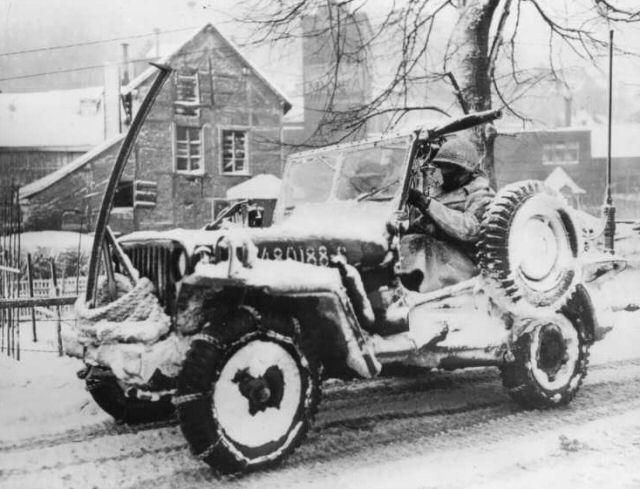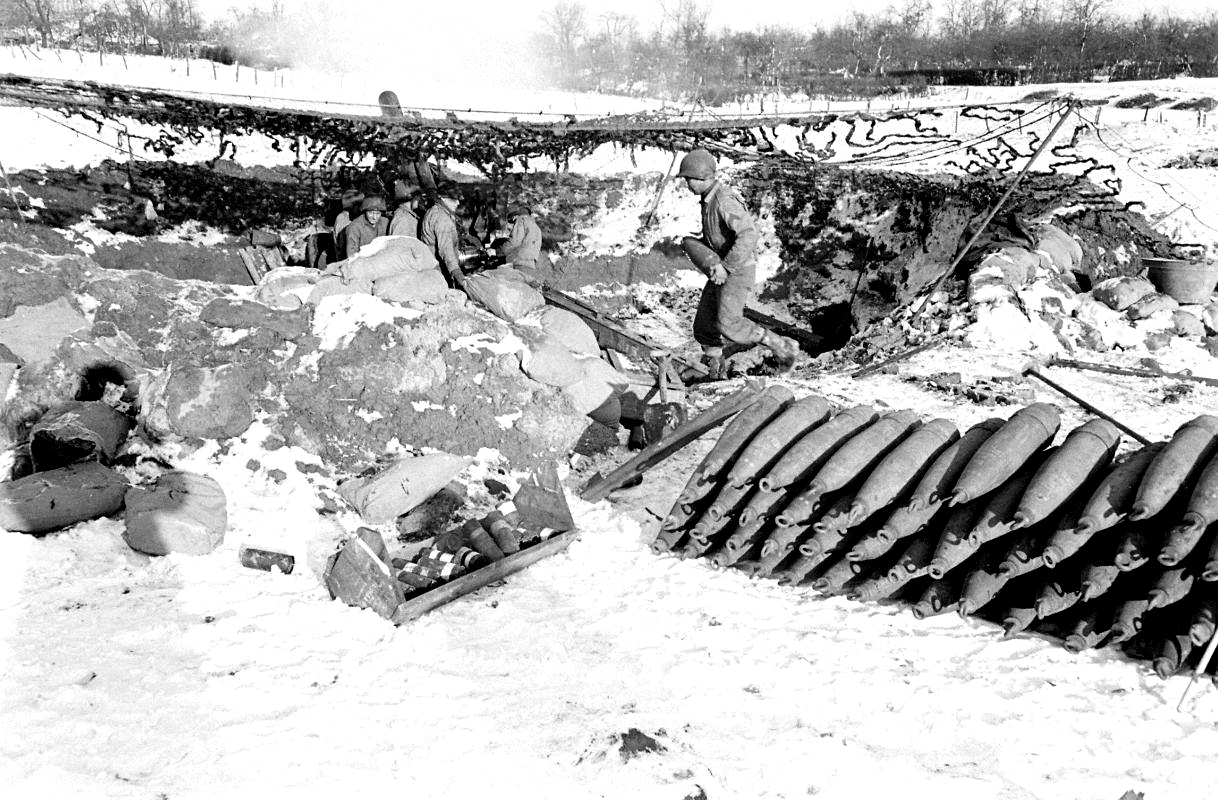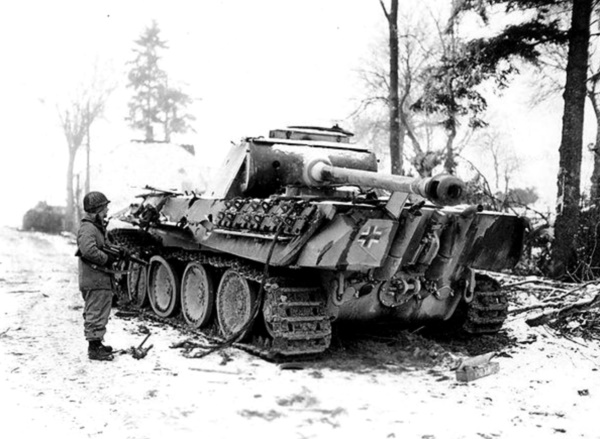East of Rogery, enemy entrenchments were reported. For this reason, the artillery battalion was ordered into a position west of Commanster for the purpose of guarding the advance. After some short struggle before darkness, Rogery was taken. One hour later, we took Cierreux. Weak enemy artillery harassing fire was directed against both localities. I ordered the prompt continuation of the march in a westerly direction off of the main road. Next march objective, the road crossing 3500 M west of Regné. During the entire day, I did not receive any report at all concerning the enemy situation and location of the adjacent units. The advance guard reported enemy column traffic in a northerly direction on the road from the Bovigny to Salmchâteau. I ordered the blocking of the road to the south, south of the mill at Cierreux, and details to follow just behind the enemy columns in order to gain as much ground as possible without fighting in this manner. However, this following was soon noticed and resulted in the fact that the tank at the end opened fire. I witnessed how the two advanced assault guns, one after another, put five enemy tanks and two coupled guns out of action one after the other by driving 50 M ahead each time and shooting off a ground signal in such a manner that the enemy tank was completely lighted up each time and could be destroyed with the first shot, in the majority of cases. Because the enemy column was apparently stopped by the demolition of a bridge, about 12 tanks and 20 vehicles could be captured in addition. The crew scattered into the terrain during the darkness.
December 24, 1944 The advance continued by way of Provedroux, Ottré, Langlire, Petite-Langlire and Bihain. At the break of the day the brigade was located in the area mentioned above. Reaching this high terrain was difficult for the tanks and vehicles as a result of the icy roads because the winter equipment requested had not arrived yet. I was very astonished to meet up already with SS units in this area. Further movement during the day was not possible because of enemy air activities, which were increasing because of weather conditions. The brigade was temporarily subordinated to the 6.Panzer-Army. A thrust in a northerly direction by way of Lierneux was intended. I wanted to lead this attack astride the road from Regné to Lierneux (by-passing the latter locality to the right) and to reach the road in the direction of Habiémont by way of Lansival. To this end, I secured Regné with a weak armored group. Reconnaissance in force thrust ahead toward Fraiture.
December 25, 1944 (Subordinated to the LVIII Corps) Shortly before the beginning of this thrust, I received the order from Heeresgruppe to reach Amonines by way of Samrée and Dochamps at the onset of darkness in order to put the brigade at the disposal of the LVIII Panzer Corps. This order was changed at the time of the departure and an advance of the brigade in the direction of Hampteau by way of Samrée and La-Roche-en-Ardenne was ordered.
The Ia (CoS) of the brigade, traveling ahead toward Warizy to the LVIII Corps, was guided in there. The Führerbegleitbrigade was supposed to take Hotton and the bridge over the Ourthe River on December 26, and attack further in the direction of Monville, Fronville, and Noiseux. To this end, the various units of the brigade received individual orders for the march into the assembly area and specifically approximately in the order of the attack planned for the following day. It was important in this connection to clear the road as soon as possible in order that units coming up could travel into their respective assembly areas, if at all possible, in order to save time. Above all, it was important to get the III Battalion, which had been divided up into all kinds of vehicles and which had already left its bicycles behind in Born, up forward during the night.
The plan of attack was the following: the II Battalion was to attack to the right along the road from Rendeux-Bas to Hamoûle hence Hampteau with the support of an assault gun company and to take the locality. The III Battalion was to thrust to the left through the Hampteau Forest (Bois de Hampteau) and take possession of the heights west of Hampteau (Sol Hé). The armored group, at the disposal of the brigade in Rendeux-Bas, was, after the success of the initial phase of the attack, to thrust through, by way of Hampteau, either along the road or further on to Hotton between Hampteau and Menil, according to the situation and terrain, in order to take possession of Hotton and the crossing site. The artillery battalion was to go into position in such a manner that it could support the various phases of battle by means of observed fire in very close coordination with the individual combat teams. The bulk of the antiaircraft regiment was employed for air defense because there was no possibility of artillery effect for the heavy antiaircraft battalion on account of its flat trajectory. During the progress of the attack, elements of the antiaircraft regiment were to eliminate enemy flanking pressure from the northern bank of the Ourthe River, especially in the area of Werpin, and to keep themselves in readiness after the capture of Hotton in order to be used to block the road of approach.
December 26, 1944 The first elements of the brigade arrived in the assembly area at about midnight. At about 0930 ending of the assembly and the beginning of the attack. Despite the extremely difficult terrain, the attack was successful. Whilst the battalion on the right took the Hampteau Forest (Bois de Hampteau), the battalion to the left trusted through. I had already given the order to move ahead to the armored group when the Corps gave me the order to suspend the attack at once and to disengage the brigade for the purpose of another assignment. My protest to the effect that this would be possible during the day only at the price of heavy losses at this stage of the battle was rejected twice. The cessation of the attack and the disengagement from the enemy was ordered. This engagement cost quite a few losses because the enemy went over to the attack simultaneously. Weak elements of the 116.PGD took over the protection of the line of departure. At the onset of darkness, the first elements of the Brigade were on the march to Halleux, Gênes, Ronchamp, and Ronchampay to the intersection of the roads west of the Champlon and Ortheuville. Fuel was so scarce that almost half of the vehicles had to be towed.
December 27, 1944 Considering the enemy air activities, the brigade was supposed to take shelter for the day in the Herbaimont Forest (Bois de Herbaimont). The medical company, traveling during the day, was shot up in flames to the extent of 40% by a fighter-bomber attack lasting 35 minutes, although all vehicles are painted white and bore the Red Cross. A number of wounded men were thereby killed. During the course of the night, the brigade was to take over the sector of the 26.VGD, which was located approximately along the line Morhet, Péry, Jodenville, Fontaine-de-Burton, Sibret. It was the intention of higher headquarters to use the brigade for the purpose of closing the broken ring of encirclement around Bastogne by means of attack in a southerly direction in order to close this gap again. I found out that the 26.VGD was very weak and was without armor-piercing weapons. It would therefore have to be taken into account that it would be pressed back even further to the north during the day. Terrain reconnaissance showed, moreover that the sector from Pinsamont to Hoûmont and the high ground south of Chenogne would have to be held under all circumstances if the conditions for the attack to the south were to remain favorable. I, therefore, decided to commit a 105-MM antiaircraft battery and a light antiaircraft battery at once in the area of Chenogne in such a manner that they could command the high terrain west and south of this locality in order to prevent an enemy tank penetration. I likewise ordered the armored personnel carrier battalion with several assault guns, which was traveling great distances between units, because of the danger from the air to proceed into the Valet Forest (Bois de Valet).
The bulk of the antiaircraft regiment was committed to an air defense around Tronlé and west of Flamierge. This measure proved good because during the course of the afternoon ten cargo-carrying gliders, committed for the purpose of bringing supplies to Bastogne, could be shot down. Sibret was lost during the course of the day, as was expected. The change was likewise temporarily lost but it was taken right back again in a counter-thrust by elements of the brigade located in the Bois de Valet. During the morning the artillery battalion took up firing positions in the area of Flamierge while the Brigade command post was moved to Tronlé.
December 28, 1944 During the night, the brigade was assembled, according to orders, in the area of Chenogne for the attack against Sibret and, together with the II Battalion, took over the guarding of the sector from the southern edge of the forest north of Magerotte – Magery – Lavaselle to the sector south and southeast of Brul. According to the expectations, the attack launched during the morning did not get very far beyond the patch of woods 1000 M south of Chenogne because the brigade was the only attacking unit, against which the entire enemy artillery and antiaircraft fire of the enemy forces located in and south of Sibret was concentrated. The flanking fire from Villeroux had an especially unpleasant effect.
A little later, the enemy forces located in the area of Sibret went over to the attack. Hard fighting went on during the entire day, during which the patch of woods south of Chenogne changed hands a number of times. During this fighting, a 105-MM antiaircraft gun distinguished itself especially. During the entire day, this gun and its crew put enemy tanks out of action, which were under heavy fire, and very close range along the southern edge of this patch of woods. The crew of the gun defended the gun in close infantry combat. It was not until December 30 that this gun was rammed by an enemy tank while fighting. In the evening the brigade reported that it was too weak to be able to carry out the attack order against Sibret alone and that concentrated artillery support on our part would be, at least, necessary to eliminate the enemy artillery. I was also especially bothered by the Haies de Magery Forest (Bois de Haies de Magery), which had only been blocked hastily by an engineer company of the 26.VGD under my command with roadblocks and a few mines. I knew that only the weak forces of the adjacent unit on my right, the 3.PGD had arrived.
December 29, 1944 December 29, was characterized by repeated enemy attacks on Chenogne from a southerly and southwesterly direction which were carried forward with strong artillery support. Penetrations that often got as far as the locality was mopped up by counterthrust. In the evening, the situation was about the same as that of the previous day. During the night, very bravely and skilfully carried out reconnaissance as far as into the patches of forest south and southwest of Sibret and reported the assembly of tanks and vehicles. The brigade calculated that December 30 would bring rather strong enemy attacks supported by tanks. Nevertheless, a renewed attack by the 3.PGD and the brigade in a southerly direction was ordered for December 30. Specifically, the 3.PGD was supposed to take Villeroux and thrust onto Assenois in order to effect a closing of the ring of encirclement around Bastogne with the 1.SS-PD. The Fuehrerbegleitbrigade subordinated to the 3.PGD, was to take Sibret and then block off the road south of Sibret leading onto Bastogne from the west.
For the brigade, this attack had the disadvantage that, firstly, it meant a repetition of the attack attempted on December 28 and would therefore have to meet up against a strengthened defense and, secondly, that no notable artillery support of any kind could be promised to me besides that of my own battalion. In addition, the III Battalion, which was still located in the old line of security, was not at my disposal for this attack. Only the elimination of the flanking pressure from Villeroux was to be counted on. The attack plan was as follows: after the assembly had been completed during the night in the area of Chenogne, the II Battalion, together with an assault gun company, was to attack and take Sibret from the northwest, west of the woods south of Chenogne (circumventing this woods because of enemy artillery fire) with the right-wing pressed along against the Brul sector and thereby open the crossings on the northern edge of Sibret for the armored group thrusting afterward.
The armored group (armored battalion and mounted armored personnel carrier battalion) was to divide itself near Flohamont and if necessary to support the attack of the II Battalion on both sides of Brul and then, however, thrust through Sibret in order to block the road leading from Bastogne to the southwest in the region of Belle-Eau to the west and likewise, the road leading to Clochîmont. The gap arising between Mande-Sainte-Marie and Sibret during the course of the attack was to be stopped by an assault gun battery and a light antiaircraft battery.
The artillery battalion, which had previously been committed in the area of Flamierge, changed its position into the hollow southeast of Rechrival and was to support the attack with its foreign observers accompanying both combat teams by observed fire on Sibret. No artillery preparation, but rather fire after the beginning of the attack on request. The battalion had already adjusted its fire on Sibret. The heavy antiaircraft battalion was likewise to support the attack on Sibret with air bursts and to combat targets that present themselves on the right flank. In addition, the heavy antiaircraft battalion actually had the assignment of putting tanks out of action which had broken through in a sort of antitank position. The III Battalion was to go on defending itself in the same sector as previously. A light antiaircraft antitank battery was subordinated. An assault gun battery was kept back from the brigade in order to be committed with the III Battalion in case of an enemy tank attack. The heavy infantry gun battery likewise had observation posts with the III Battalion.
December 30, 1944 The attack was set for 0730 in order to steal the march on the enemy attack to be expected. According to experience, the enemy never attacked before 0900. The II Battalion, located in an advanced position, had, shortly before, captured the enemy security detachment just ahead of it, halfway between Chenogne and Flohamont. Forward brigade command post south of Chenogne. Brigade command at Renuamont. At the break of daylight, the II Battalion started out, whilst the armored group expanded toward the south, gaining ground south of Chenogne. For the time being, the II Battalion made good progress, however, it got stuck on the Brul ditch just before Sibret in infantry fire and well-placed artillery fire from Sibret. The brave commander, oak leaf cluster bearer, Maj Mikley was so badly wounded that he died a short time later when he tried to pull his battalion forward again. The commander of the I battalion was likewise put out of action by traffic during the previous night.
As the fog lifted, the armored group, which was advancing onto Flohamont, recognized two armored groups of about 30 tanks each advancing to the north. As far as I recall, one was located in the area of Morhet, while the other was traveling in the direction of Jodenville. The armored group of the brigade opened fire at once and put a number of tanks out of action at once. Because our group was located on a slope it was very soon under heavy concentrated tank fire as well as well registered artillery fire. We disengaged from the enemy. Taking the II Battalion with us, we continued to carry on the tank battle for the terrain between Mande-Sainte-Marie and the patch of woods to the east. The II Battalion disengaging itself from the field rather than to the side had considerable losses. Four tanks were thereby put out of action. This tank battle led inexorably on both sides and lasted about two to three hours. I learned from an estimation of the situation that our attack had been started at the same time as a very strong enemy attack, which apparently was supposed to lead to a retirement of our divisions fighting toward the west. The reinforced, concentrated enemy artillery fire, as well as the continuous bombing attacks and fighter-bomber attacks also indicated this.
I had thus far been with the armored group. When I noticed that an enemy task force was advancing to the north by way of Lavaselle in the direction of Rechrival, in the direction of our poorly manned line of security, I immediately drove with my command armored personnel carrier through the Bois de Valet to Renuamont, whether my brigade staff had moved during the morning. During a short discussion about commitment with my CoS, the first enemy tank already drove past my house, while the second covered the church in Hubermont. The first was wiped out by an antitank grenade, while the second was forced to turn away to the south by fire. The assault gun company, which was still available, together with a few mounted grenadiers, was sent out from Milliomont toward the southwest in order to block the road south of Rechrival and likewise the sector between this road and the Bois de Valet.













